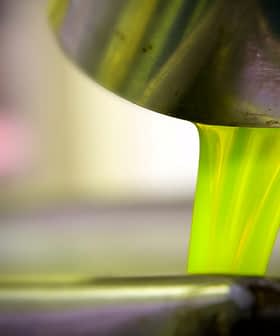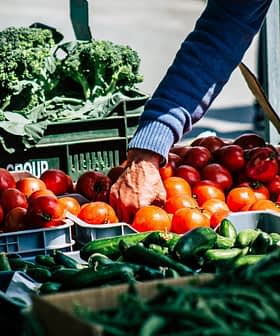How Microorganisms Affect the Sensorial Qualities of Olive Oil
Yeasts are among the microorganisms present in olive oil and, depending on their enzymatic activities, they can either improve or damage the oil quality.
Microorganisms play a larger role than previously thought in affecting the chemical and sensory qualities of olive oil, research from the University of Molise suggests.
Yeasts are among the microorganisms present in olive oil and, depending on their enzymatic activities, they can either improve or damage the oil quality. Some act as preservatives, increasing the shelf life of the olive oil. Others act as catalysts for chemical reactions that lead to rancidity in the oil.
Certain oil-born yeast species may exert a positive effect on the sensorial characteristics of newly produced virgin olive oil by promoting the debittering process.
“The activity of healthy olive microbiota greatly contributes to the preservation of the overall quality of olive oil production during the post-harvest storage, processing phase and storage of the produced olive oil,” researcher Biagi Zullo wrote in the report.
Gino Ciafardini, a leading expert on yeast in olive oil, and Zullo have been studying microorganisms in olive oil since 2002. In the past 16 years, they have discovered 17 species of yeast and are currently figuring out how these microorganisms affect sensory characteristics of the oil.
“Certain oil-born yeast species may exert a positive effect on the sensorial characteristics of newly produced virgin olive oil by promoting the debittering process,” Zullo wrote. “Other yeasts are considered harmful as they can damage the quality of the oil through hydrolysis of triacylglycerols and the production of unpleasant flavors.”
The number and type of yeast species are heavily dependent on the chemical composition of the olive oil. Oils with higher concentrations of phenolic compounds tend to have fewer types of yeast in lower concentrations.
“The content of the total polar phenols of the olive oil and their profile as antimicrobial compounds, show a strong selective pressure on the type and number of years that survive in the oil during its storage,” Ciafardini said. “In general, the olive oil’s microbiological quality is correlated with the chemical and sensorial quality of the product.”
Yeast and other microorganisms that are found in the olive oil come mainly from the fruit, itself. When the olives are pressed into a paste, these microorganisms become suspended in the oil droplets.
“Previously, it was widely believed that virgin olive oil provided an unsuitable habitat for many microorganisms,” Zullo wrote. “Microbiological research studies have since established that freshly produced virgin olive oil is contaminated by microorganisms consisting mainly of yeast that are capable of conditioning the physicochemical and sensorial characteristics of the oil.”
Ciafardini and Zullo are currently categorizing these yeast species based on their positive or negative effects on the oil quality. Ciafardini said there is no way to control the types of yeast species that end up in certain olive oils.
“Through the olive oil filtration it is not possible to separate the yeasts that potentially can harm olive oil quality from those that help oil quality,” he said. “The best way is to produce virgin olive oil of good quality, obtained from healthy fruits, having sufficient polar phenols content able to inhibit the activity of some undesirable yeast enzymes.”
There may be no way to control the types of yeast species in the oil, but there are variables that olive oil producers can control in order to ensure they make a higher quality product.
The condition of the olives when they are processed have a big effect on the types of yeast present in the oil. For example, if the olives are beginning to ferment when they are pressed into oil, certain yeast species that produce ethanol and ethyl acetate will be present. These two chemicals give the oil a vinegary taste if it sits unused for too long.
Ciafardini and Zullo also found that monovarietal olive oils tend to have fewer, sometimes only one, species of yeast. Depending on the condition of the olives when they are pressed, this method of production drastically decreases the chances of harmful yeast existing in the oil.
Certain essential oils also can be added to olive oil in order to lower the concentration of yeast and, in certain cases, counteract its negative effects. The essential oils used in lemon and garlic flavored olive oils acted as especially strong inhibitors for the growth of microorganisms.
Ciafardini said that research on olive oil yeast has only reached the tip of the iceberg. He and Zullo discovered six of the 17 species just last year. The two believe that there is much more work to be done in order to fully understand how different yeast species affect the quality of the olive oil.
“In virgin olive oil… the presence and activity of yeasts were demonstrated during the past two decades,” Zullo wrote. “In fact, investigations exploring the olive oil microbiology are comparatively scarce; therefore microbiota in extra virgin olive oil remains poorly understood.”








